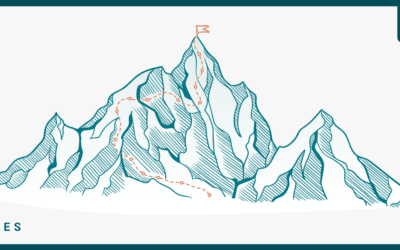In our last post, we talked about (and hopefully created) your business hypothesis. To recap quickly, a business hypothesis should:
- Be designed to test the riskiest assumption(s) about your business concept.
- Be specific and measurable so you know when your test has been successful.
- Is outcome-neutral; it’s not designed to steer toward a preferred outcome and only seeks to answer a question as accurately as possible.
Once we’ve got this hypothesis created, it’s time to test it! And the first way we do that is by talking to potential users.
Now, you may be asking yourself, who is my potential user? Well, chances are you already have a pretty good idea in mind, but just like our hypothesis should be specific and measurable, so should our ideal user profile be, too.
To get started with this, simply ask yourself, as specifically as possible, who is my user? Here are a few things to consider:
- How old are they?
- What level of education have they achieved?
- What is their household income?
- Where do they live?
- What other activities or interests might they have that connect them to your concept?
- Do they have children?
These are just a few of the specific ways that we can create a clearer picture of exactly who we should try and interview. Also, this may sound familiar to you…it’s a hypothesis!
Moving on, now it’s time to talk to your user. We’ll cover finding your ideal users and exactly how to interview them in more detail in our Foundations course, but here are a few tips and tricks to get started.
Finding Users to Interview
If you’ve already got a product in the field, you’ve also probably got a list of users you can reach out to, but what if you don’t have access to users in this way?
We recommend starting by asking yourself, “Where do my users hang out?” This can be online, in person, or both! The key is to identify places or activities your users may be drawn to and to try and engage them there.
For example, if I’m creating an app for soccer fans, I’m probably going to go looking at soccer fan forums online, visit matches with flyers or business cards, and potentially even create test ads on Facebook or Google that retarget users who express interest in soccer.
Interviewing Users
Interviews are much harder to do well than they may appear on the surface. That’s ok, though. You will get better with practice. In the meantime, make sure you follow these key rules:
Keep it quick!
Respect your interviewee’s time and try to keep interviews to 15-30 minutes.
Don’t lead the witness!
Make sure your questions are not biased toward your own thoughts or feelings about your concept. Remember, we want outcome-neutral information. If you find out that your concept isn’t viable, that’s a good outcome, too; you just avoided a long, expensive, and painful journey.
Record the interview (with permission), transcribe it, and refer to this alongside your notes after the interview is over.
If you’re like us, it’s hard to have a deep, insightful conversation and take detailed notes at the same time. For this reason, we try to record our interviews, always with permission and use transcription to check our notes and assumptions.
Finally, learn to ask open-ended questions with lots of follow-ups.
Avoid asking “Yes or No” questions and instead opt for questions that require some explanation from your interviewee. Furthermore, learn to ask good follow-up questions. This is where the magic happens in user interviews.



